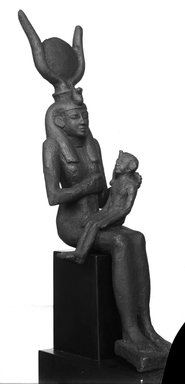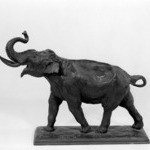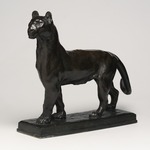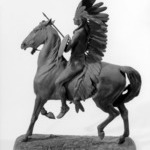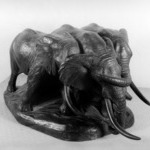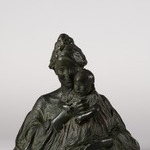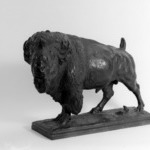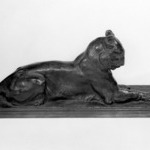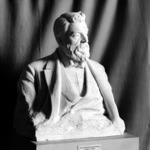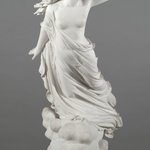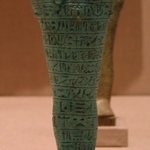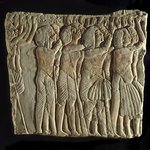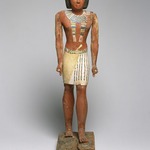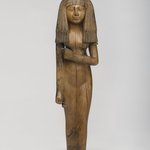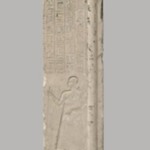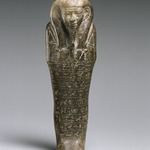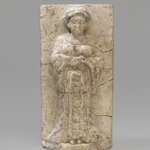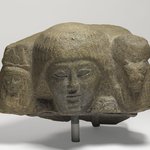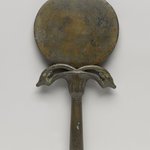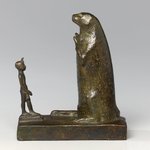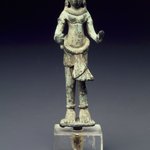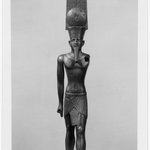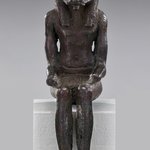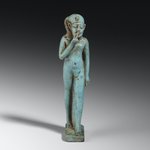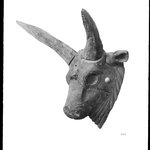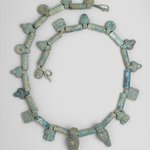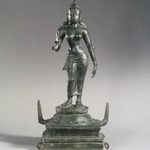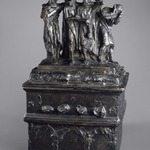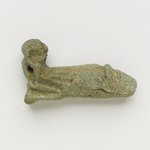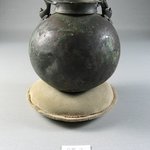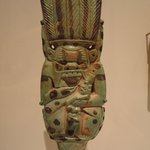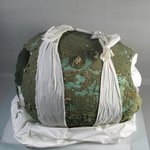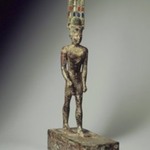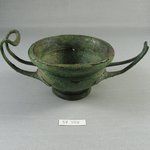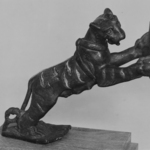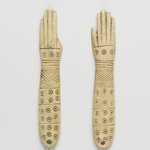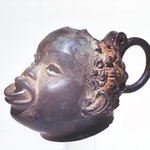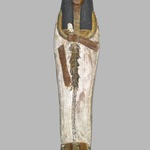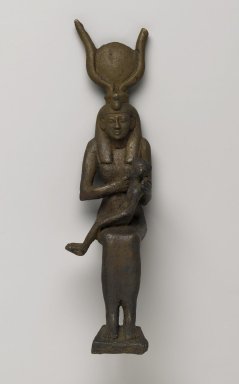
Statue of Isis Nursing the Child Horus
Egyptian, Classical, Ancient Near Eastern Art
Birth and rebirth took place within a family. Ancient Egyptians regarded the first royal family—including Osiris, his wife Isis, and their child Horus—as the model to imitate. But even with the joy of a birth, death was present: Osiris and Isis conceived their child through magic following his murder by his jealous brother. After the procreation of Horus, Osiris retired to the afterlife as the divine king of the Netherworld, while Isis gave birth and then raised Horus until he was ready to rule Egypt.
Osiris’s life, death, and rebirth into the afterlife formed a pattern that all Egyptians sought to replicate in the tomb. Using the power of language, the deceased was addressed as Osiris during the funeral ritual. Osiris was added to the personal name and written on the coffin. In this case, too, language could shape reality for the Egyptians.
Osiris’s life, death, and rebirth into the afterlife formed a pattern that all Egyptians sought to replicate in the tomb. Using the power of language, the deceased was addressed as Osiris during the funeral ritual. Osiris was added to the personal name and written on the coffin. In this case, too, language could shape reality for the Egyptians.
MEDIUM
Bronze
DATES
664–332 B.C.E.
DYNASTY
Dynasty 26, or later
PERIOD
Late Period
DIMENSIONS
10 7/16 x 2 11/16 x 3 7/16 in. (26.5 x 6.9 x 8.8 cm) (show scale)



COLLECTIONS
Egyptian, Classical, Ancient Near Eastern Art
ACCESSION NUMBER
37.371E
CREDIT LINE
Charles Edwin Wilbour Fund
CATALOGUE DESCRIPTION
Solid cast bronze statuette of Isis seated nursing the infant Horus. Though Isis is in a seated position her throne is missing and the deep tenon below the small base for her feet indicate that this was a composite sculpture. She wears a full length garment which is only defined by the line at the base of her neck and the hem just above her ankles. She wears a plain tripartite wig with single uraeus and sun disc with Hathor horns. Her right arm is bent at the elbow with her hand reaching below her left breast. Her left arm is also bent at elbow and outstretched with her hand reaching the back of the neck of Horus who wears a sidelock and uraeus only. His posture is angular and stiff; he leans back slightly; his arms are at his sides bent at elbows. His lower legs swing out slightly from his Mother's lap while his feet rest on a tiny, suspended flat base. There are not specifically fine details of workmanship though the facial features of Isis are sweet idealizing. Face of Horus perhaps slightly mutilated in casting. Negative space appears between right arm and torso of Isis, between bodies of Isis and Horus and between ankles of Isis.
Condition: Bronze solid cast. Throne missing. Tip of left horn from crown broken away. Dark brown bronze apparently stable with some green and red patina.
MUSEUM LOCATION
This item is not on view
CAPTION
Statue of Isis Nursing the Child Horus, 664–332 B.C.E. Bronze, 10 7/16 x 2 11/16 x 3 7/16 in. (26.5 x 6.9 x 8.8 cm). Brooklyn Museum, Charles Edwin Wilbour Fund, 37.371E. Creative Commons-BY (Photo: Brooklyn Museum, 37.371E_PS2.jpg)
IMAGE
overall, 37.371E_PS2.jpg. Brooklyn Museum photograph, 2009
"CUR" at the beginning of an image file name means that the image was created by a curatorial staff member. These study images may be digital point-and-shoot photographs, when we don\'t yet have high-quality studio photography, or they may be scans of older negatives, slides, or photographic prints, providing historical documentation of the object.
RIGHTS STATEMENT
Creative Commons-BY
You may download and use Brooklyn Museum images of this three-dimensional work in accordance with a Creative Commons license. Fair use, as understood under the United States Copyright Act, may also apply.
Please include caption information from this page and credit the Brooklyn Museum. If you need a high resolution file, please fill out our online application form (charges apply).
For further information about copyright, we recommend resources at the United States Library of Congress, Cornell University, Copyright and Cultural Institutions: Guidelines for U.S. Libraries, Archives, and Museums, and Copyright Watch.
For more information about the Museum's rights project, including how rights types are assigned, please see our blog posts on copyright.
If you have any information regarding this work and rights to it, please contact copyright@brooklynmuseum.org.
RECORD COMPLETENESS
Not every record you will find here is complete. More information is available for some works than for others, and some entries have been updated more recently. Records are frequently reviewed and revised, and we welcome any additional information you might have.
